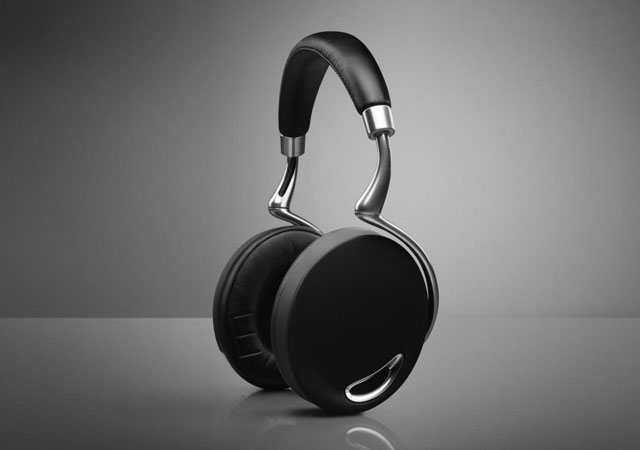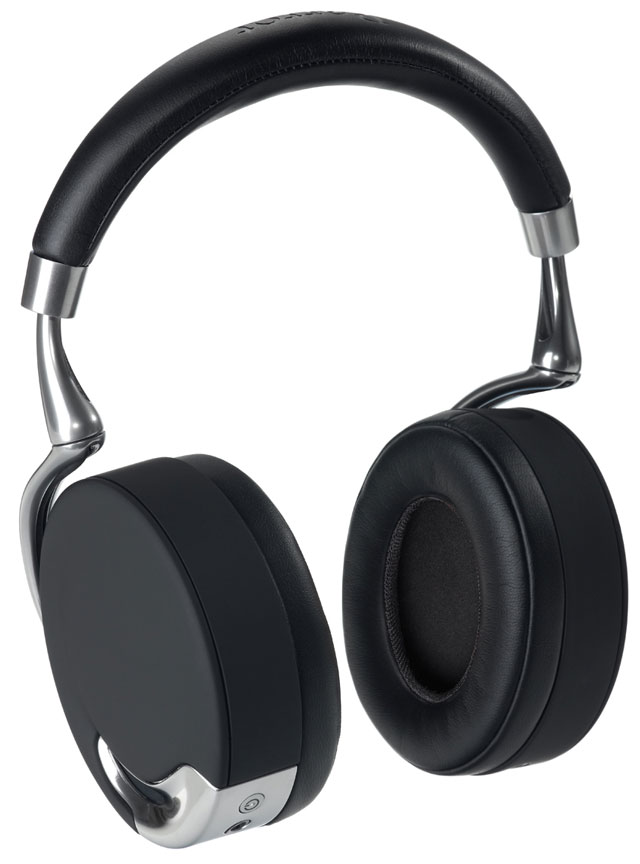
The Zik headphones from Parrot are unabashedly attention grabbing. Combining chrome, matt-black plastic and leather, they’re simply beautiful. Understated design, invisible touch controls, superb noise cancelling and a number of ingenious features make them highly covetable, even with their splutter-inducing price tag of R3 999.
However, with clinical-sounding audio out of the box, they’re unlikely to charm the most fickle of headphone buyers: the audiophile.
There are two main considerations with any pair of headphones: how comfortable are they and how do they sound? Parrot’s latest offering does its level best to satisfy both criteria, and almost succeeds.
Were there was an award for the most luxurious ear cups ever to grace our pinnae, the Zik headphones would win hands down. Thick leather padding around the ears and a headband that adjusts with a satisfying click on either side make it easy to achieve the perfect fit, but we’d like a little more padding on the actual headband itself, particularly given that the headphones are not the lightest over ears we’ve used.
The right headphone contains the Zik’s only physical button — the power button — alongside the 3,5mm audio jack and a micro USB port used for charging and updating the firmware (though this can also be done over Bluetooth). Both headphones contain a number of microphones that are used by the noise-cancelling system to detect and counteract ambient noise.
There’s even a near-field communication (NFC) chip in the left headphone that allows for pairing with NFC devices by means of tapping the two together.
Aside from the fact that they were designed by Philippe Starck, the Zik headphones’ other big claim to fame is their selection of touch controls on the outside of the right earphone. Swiping a finger up or down the surface adjusts volume; swiping backwards or forwards moves between tracks; and a single tap will pause or answer a phone call.
The touch panel works incredibly well and doesn’t tend to register stray or accidental presses such as when adjusting the position of the headphones. As impressive as the touch control panel is, what we found even more pleasing was the sensor in the leather padding of the right ear-cup that detects when you take the headphones off or sling them around your neck and pauses the music automatically. Return them to your head and the music resumes.
Similarly, when taking a call, taking the headphones off will route the audio back to the handset. It’s a simple feature but an inspired one.
There’s an 800mAh lithium battery in the left earphone that’s accessed by removing the magnetic exterior cover. Though it’s unlikely many people will want to go to the effort of carrying a spare battery, the prospect of being able to replace it is comforting given these are the sort of high-end headphones that one doesn’t expect to have to replace for a decade or more, if ever.
In our tests, battery life was very respectable. With all of the bells and whistles engaged, you’re looking at about eight hours of use. Turn off noise cancellation and this doubles at least. The Zik headphones should manage most long-haul flights, which makes sense given we can’t help feeling the frequent flyer is probably Parrot’s target consumer.
Even when the battery dies, it’s still possible to use the headphone to listen to audio by means of the supplied 3,5mm to 3,5mm cable. However, without the battery, the touch controls, microphone, audio effects and noise cancelling won’t work, but that’s to be expected.
This does, however, mean that when the batteries have bade you farewell — or when you’re using the headphones with something that doesn’t offer Bluetooth — you’re stuck with the Zik’s default audio settings. We found the default settings resulted in flat, stilted audio that benefited greatly from a little fiddling of the equaliser. The equaliser forms part of the Parrot Audio application that’s available for iOS and Android devices.
The application, called the Parrot Audio Suite, allows you to turn noise cancellation on or off, adjust the equaliser, monitor the battery level and engage Parrot’s “concert hall” feature that mimics different settings by virtually setting each of the two speakers at different angles. In other words, you can get the headphones to imitate a venue where the sound would be coming from the front, or alternatively move them as far as 180 degrees apart as if on either side of a living room.

With the equalizer, it’s possible to tweak the Zik’s audio to match any preference. Bass is rich and deep and the midrange is well rounded with the headphones seemingly unable to clip the high range even when we tried to. A little mucking about and it’s possible to make the Zik’s sound brilliant, but we can’t help feeling they shouldn’t require that much work to optimise. Moreover, it means the accompanying app is a necessity, reducing the range of devices with which the Zik headphones can (practicably) be used.
We’d like to be able to control the noise-cancellation functionality with a physical switch rather than an app, particularly as foregoing it is an easy way to conserve battery power for wireless use, but it’s a minor gripe. It would also be nice to be able to turn off the feature that pauses the music automatically when the headphones are removed.
With clean lines, comfortable cans and all round good looks, the only thing that prevents us from wholeheartedly recommending the Zik headphones is how uninspiring the audio is when they’re tethered or used with a device that doesn’t run the app and its equaliser. For R3 999, we expect them to shine in all conditions, not only ideal ones. — (c) 2013 NewsCentral Media

